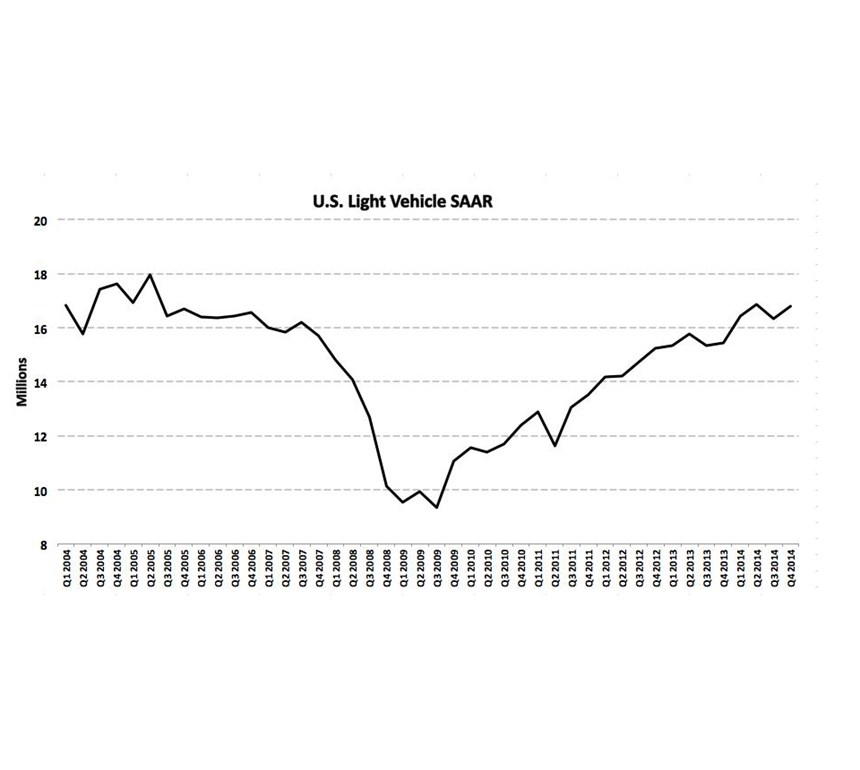Is it Supply or Demand that Drives Our Business?
The Great Recession, which lasted from December 2007 to June 2009, established conclusively for me that it is demand and not supply that determines our businesses’ success. (NBER, 2010).
As an aspiring MBA student, my one key question for my economics professors was whether it was supply or demand that was the most important factor for an organization’s business success. Despite the best efforts of my professors, we were not able to establish the primacy of either supply or demand. Each had its advocates and its detractors, but resolution was not achieved. It seemed to be unknowable, strictly a matter of personal opinion, until the Great Recession. The Great Recession, which lasted from
December 2007 to June 2009, established conclusively for me that it is demand and not supply that determines our businesses’ success. (NBER, 2010).
Prior to the Great Recession, U.S. Light Vehicle SAAR was at or above the 16 million vehicle level. At the onset of the Great Recession, no significant manufacturing capacity had yet been lost, but sales dropped 37.5 percent to below 10 million SAAR between Q4 2008 and Q3 2009. (Figure 1)
It was the lack of demand for light vehicles in the U.S. that determined market outcomes, not availability of supply. Our factories still had the capacity to build more cars at the higher rates of prior years. Industry suppliers still had the capacity to produce materials and component parts needed for the much higher production levels of prior years. The absence of customer demand for new automobiles, however, showed us that ability to supply was of little consequence. In the absence of demand, U.S. Light Vehicle Automobile Sales plunged more than 37.5 percent.
Lack of demand explains why North American Light Vehicle Sales plummeted and why our businesses
need to focus on serving customers rather than profits. Managements had what they needed in terms of factories, materials and labor in the period from December 2007 to June 2009, but it did not matter. Customers were not buying what we could manufacture. The Great Recession taught us that businesses exist to serve customer demand. The Great Recession showed us the folly of, “If you build it, they will come,” thinking. Customers failed to come to the door of the automakers in 2009 and were very slow in returning to market in the years that followed. Only in 2014, five years following 2009, did sales recover to the 2007 level.
This showed me that it is demand that is most critical to our businesses. Without customer demand, there can be no products. Without products, there can be no profits. Profits are a by-product of the products and services that our businesses provide to customers to satisfy their wants. Profits are not the object of our business. “Profit is not the explanation, cause or rationale of business behavior and business decisions, but the test of their validity,” Peter Drucker says.*
Without customer demand, we had no business, so it was obvious that we would have no profits.
Without customers, there can be no demand. No customer demand equals no profits.
So, what is the purpose of our business? If you say it is to make profi ts, I would urge you to reconsider. The purpose of our businesses must be the creation and protection of our customers. It is the provision of goods and services to customers. Without this customer focus, there will be no customer demand. Without customers, we will have no sustainable business, no sustainable profi ts.
The loss of customer demand in the Great Recession is proof that our organizational purpose must be customer-focused. Customer demand is what determines market outcomes. Customer demand is what we build our fi rms to serve. Our organizations must be driven to sustain the demand that
sustains them. The motivation for our actions must therefore be to serve our customers, by creating, protecting and providing them goods and services to nurture and sustain their demand.
Profits are the evidence that we are doing this right.
Sources:
*Quotes: Peter Drucker – The Practice of Management, 1954, Harper Collins, New York, New York
Read Next
A Tooling Workshop Worth a Visit
Marubeni Citizen-Cincom’s tooling and accessory workshop offers a chance to learn more about ancillary devices that can boost machining efficiency and capability.
Read MoreDo You Have Single Points of Failure?
Plans need to be in place before a catastrophic event occurs.
Read More5 Aspects of PMTS I Appreciate
The three-day edition of the 2025 Precision Machining Technology Show kicks off at the start of April. I’ll be there, and here are some reasons why.
Read More












.png;maxWidth=300;quality=90)







